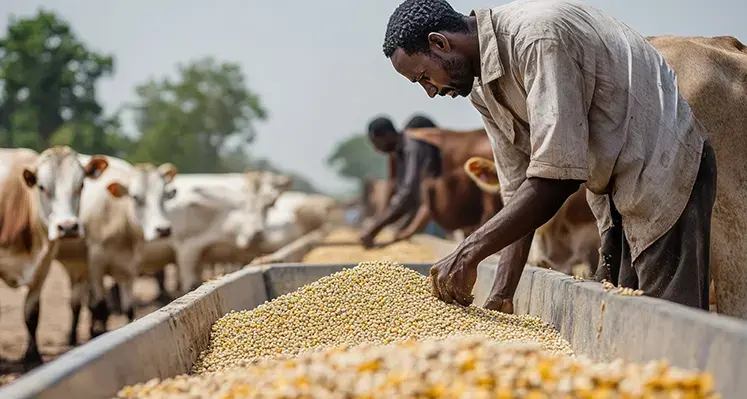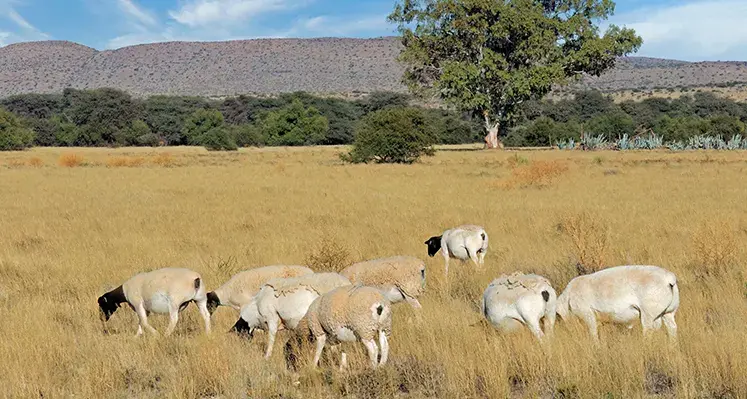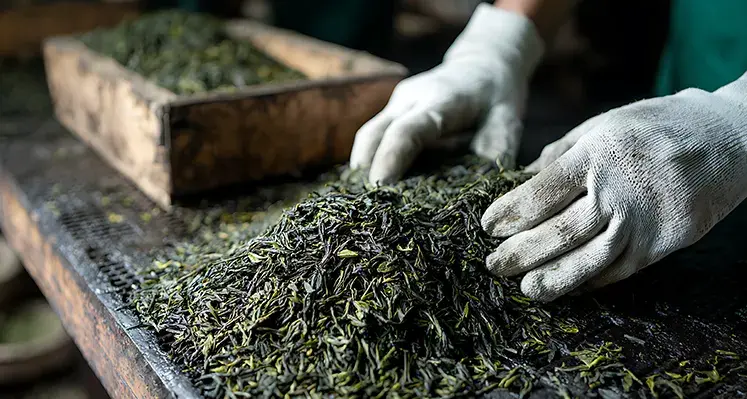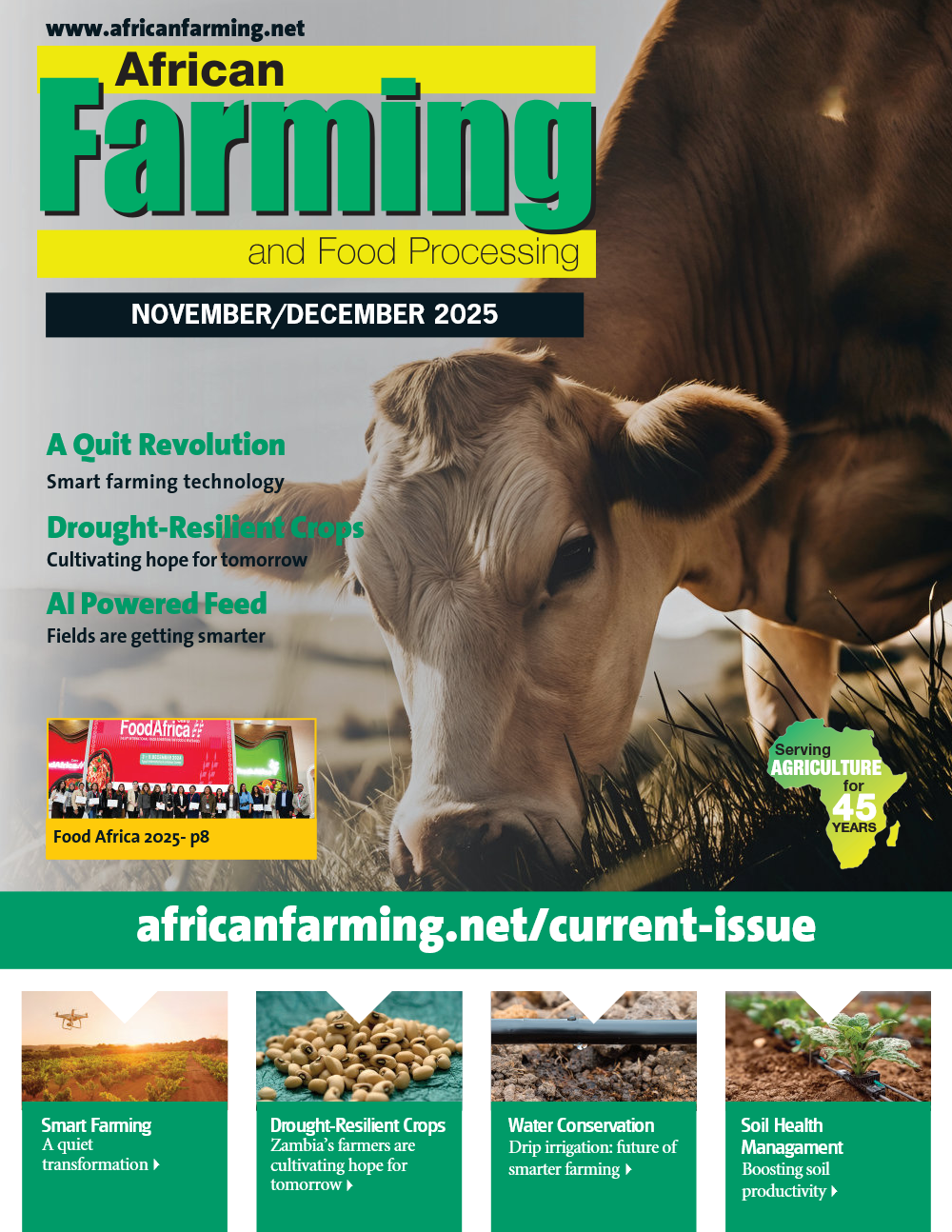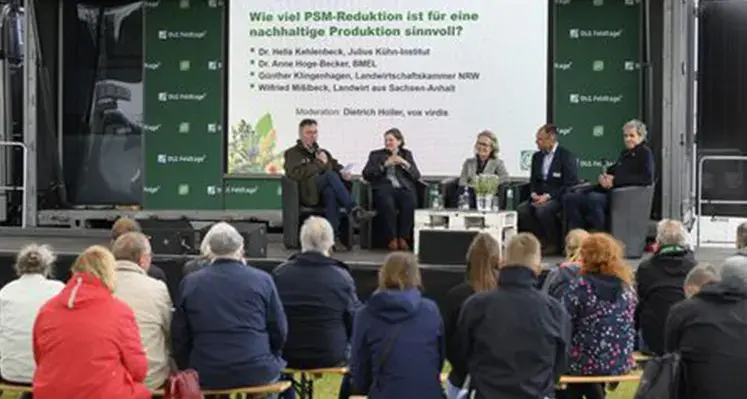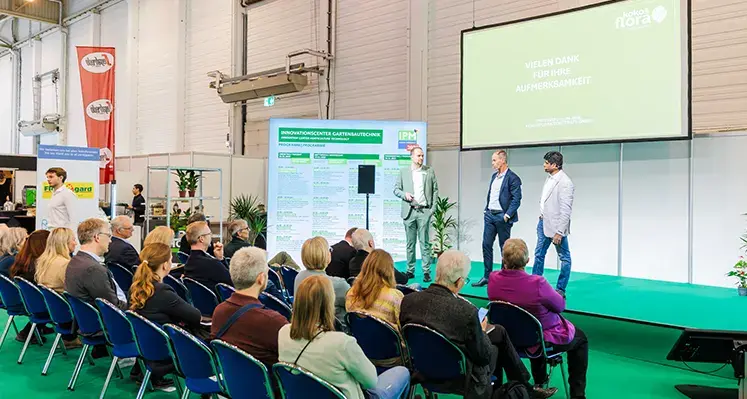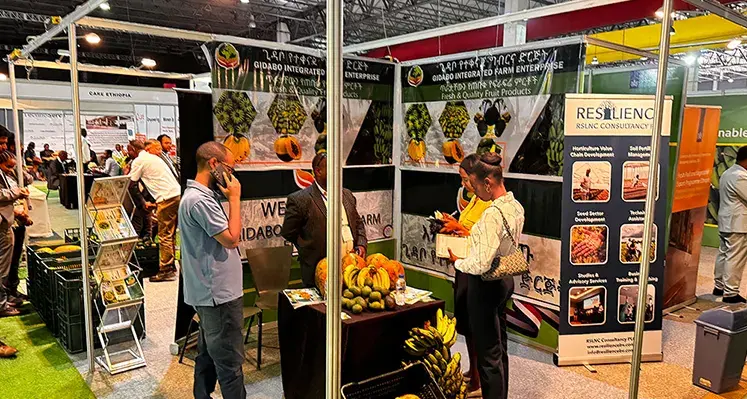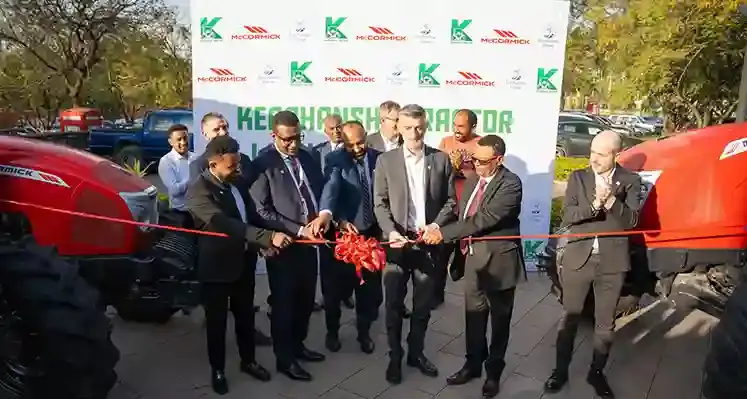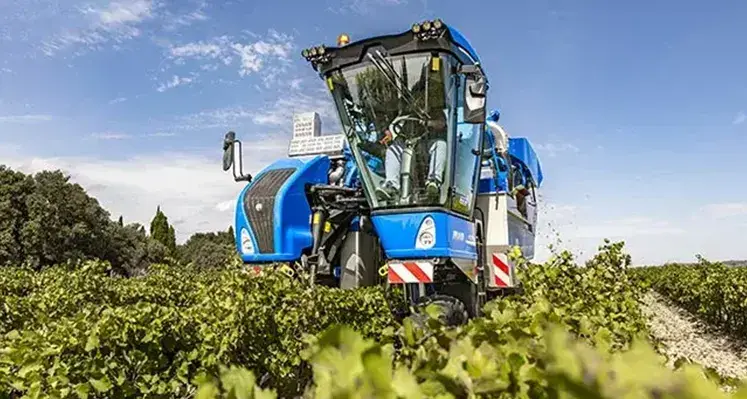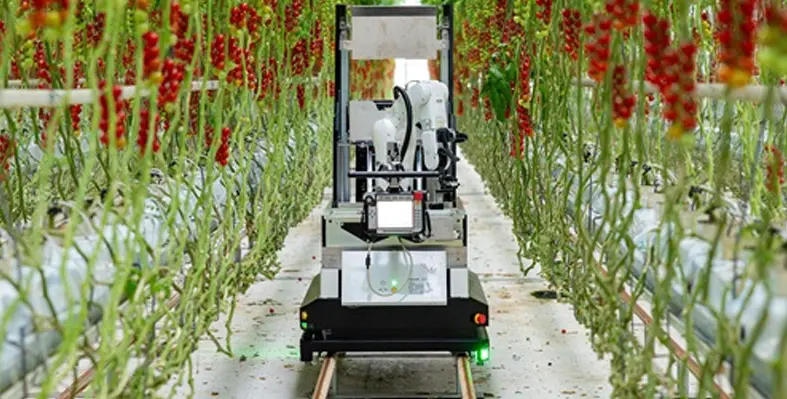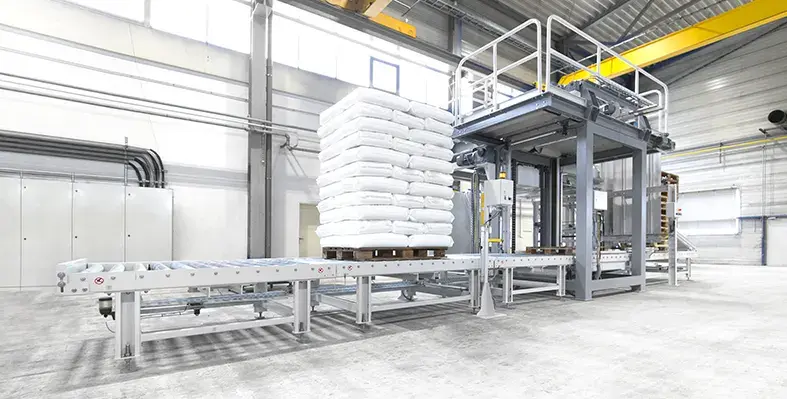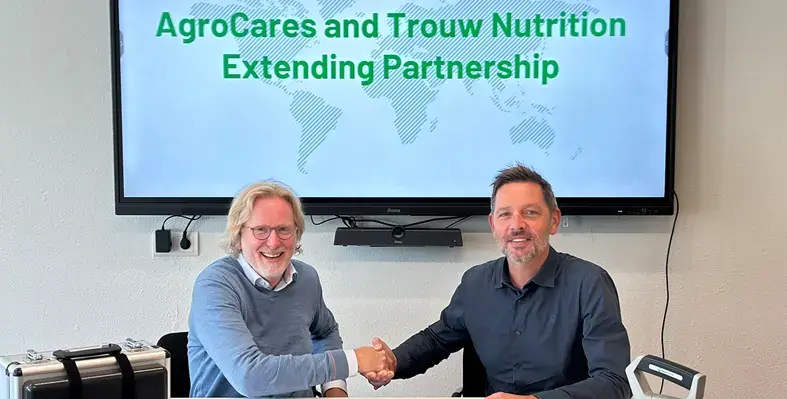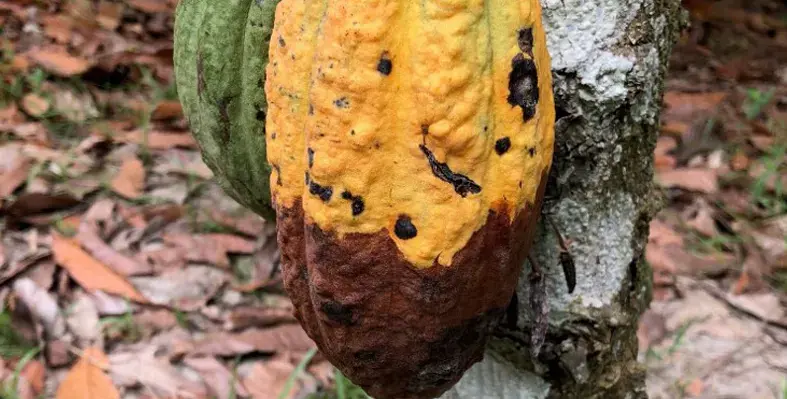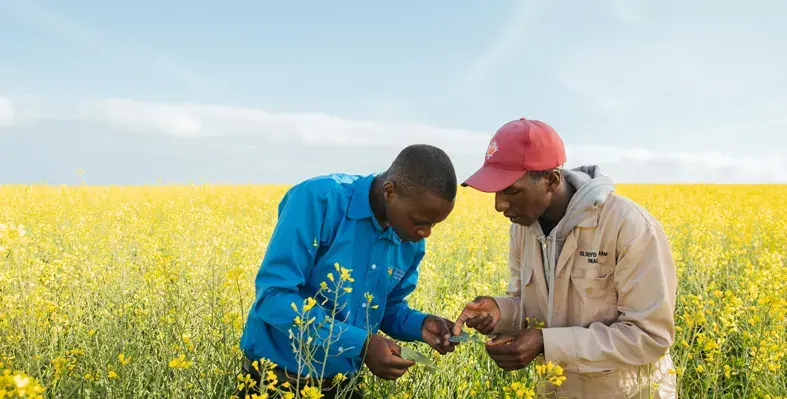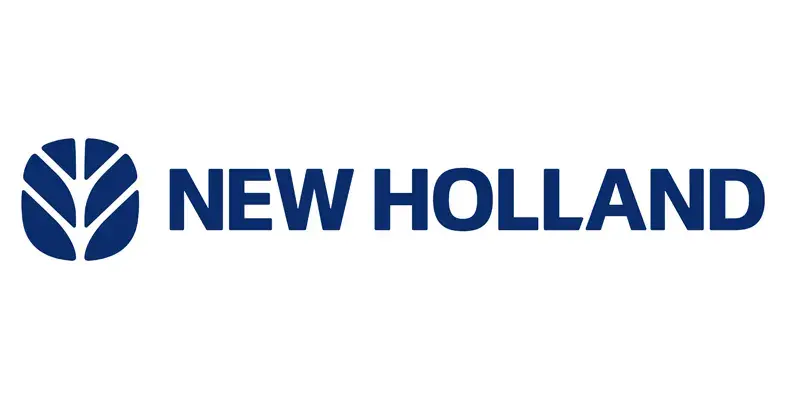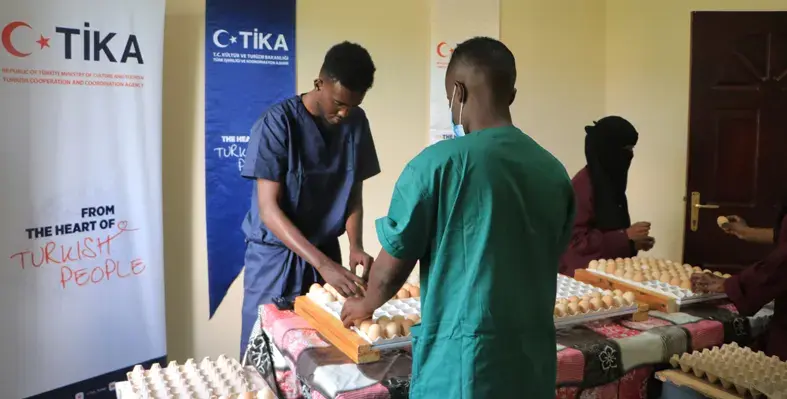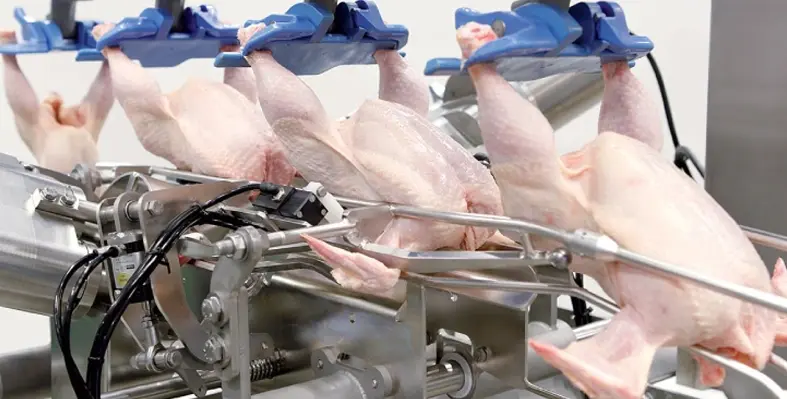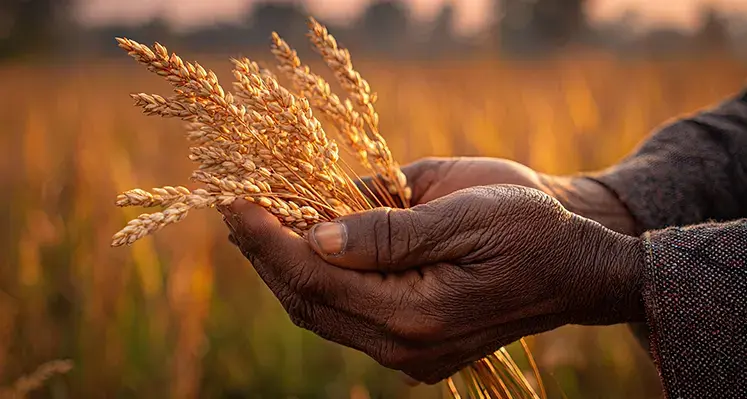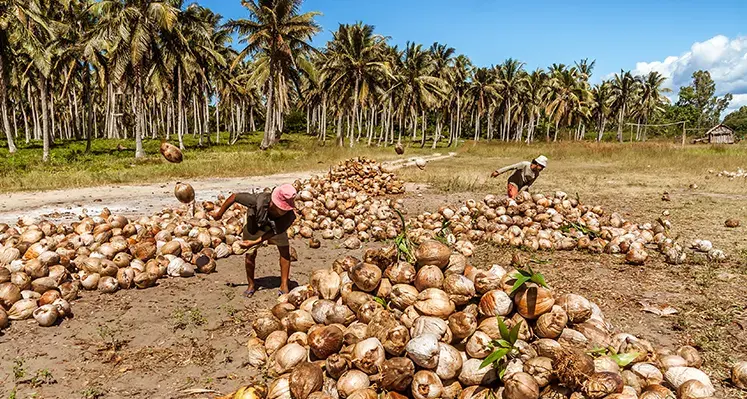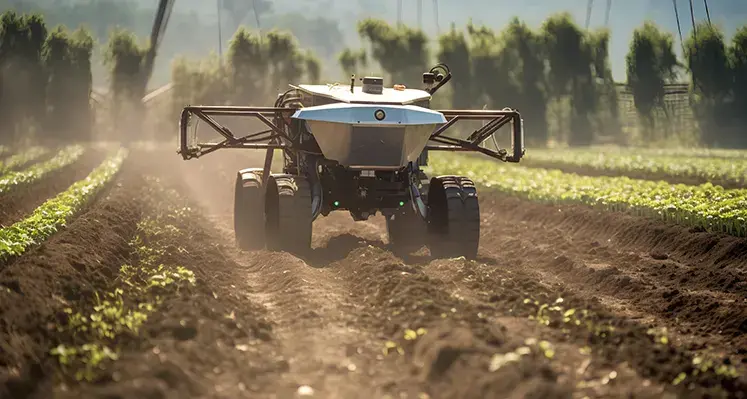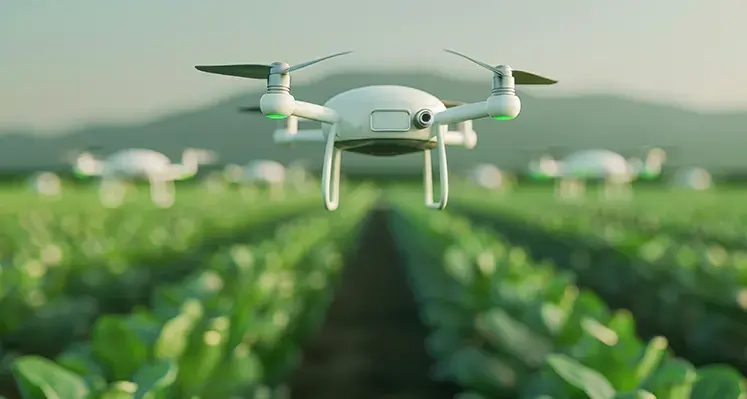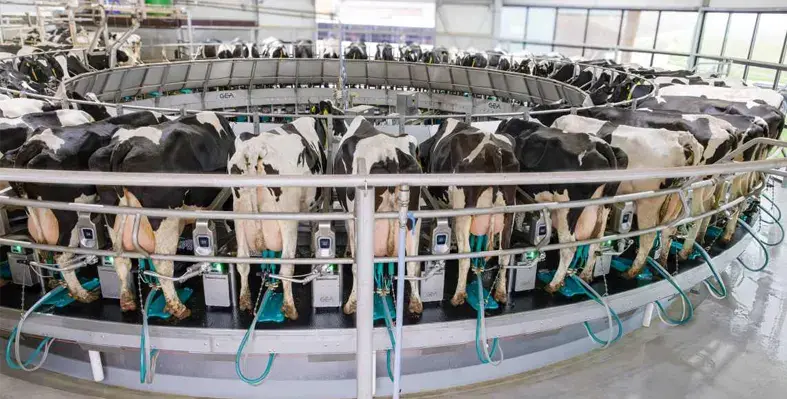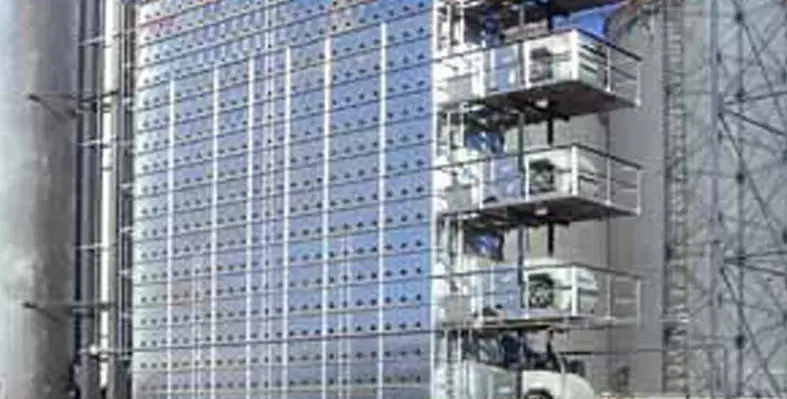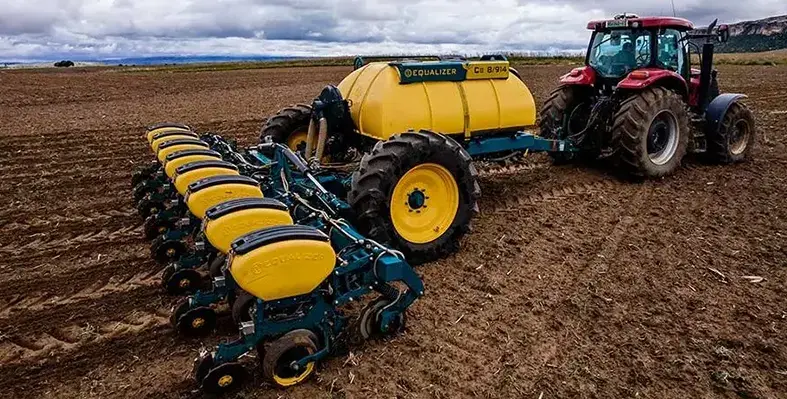In The Spotlight
Dorper sheep breeding in Zimbabwe is experiencing renewed growth, with rising demand, strong auction prices and expanding breeder participation signalling a positive turnaround for the sector.
This upward trajectory was highlighted by the first-ever Dorper sale held in Matabeleland on 28 November 2025 in Bulawayo - a landmark event for the country’s small-stock industry.
Zimbabwe Dorper Sheep Breeders Association chairperson William Hundermark told that Matabeleland had never previously hosted a Dorper sale. He explained that Zimbabwe’s stud breeding industry, including the Dorper breed, suffered heavily during the land redistribution programme, which led to the emigration of many established breeders. The situation was further compounded by recurring foot-and-mouth disease outbreaks, which restricted livestock movement and prevented large-scale auctions.
Hundermark described the Bulawayo auction as a major breakthrough, noting that it exceeded expectations. “The top registered Type 5 ram sold for US$2 000 (around R33 864), and several others sold in the range of US$1 800 to US$1 850 (R30 476 to R31 322). Many rams achieved US$1 500 to US$1 550 (R25 397 to R26 244), and even the Type 4 unregistered rams made between US$1 000 and US$1 500 (R16 932 to R25 397). The Type 3 rams ranged from US$600 to just over US$1 000 (R10 159 to R16 932,” he said. “For a sale with no prior track record in the region, these prices were phenomenal.”
Providing further context, Hundermark referenced the Zimbabwe Herd Book National Breed Sale held in July 2025, where a Dorper ram from his Northern Dorper Stud fetched a record US$4 300 (R72 808). Average ram prices stood at US$2 700 (R45 716), while ewes sold between $550 and $600, with a top price of US$700. “What this tells us is that across Zimbabwe, demand for quality Dorper genetics is climbing sharply. Farmers are seeing the value in small-stock, and Dorpers keep proving themselves year after year,” he said.
Demand for breeding ewes and rams continues to rise, with shortages already emerging. The association now has nearly 80 members, compared to just six in 1958, reflecting the breed’s growing national footprint.
Veteran breeder Rose van de Ruit, who began with 20 sheep in 1998 and now manages a flock exceeding 400, emphasised the importance of genetics and management.
“Over the years, I have learnt the importance of selective mating and the role genetics plays in the breeding of good animals,” De Ruit said.
Despite persistent challenges such as high feed costs, vaccine shortages, limited access to land and finance, Hundermark remains optimistic. “Overall, these challenges are real, but they can be solved with coordinated planning, industry unity, and supportive national policy,” Hundermark concluded.
Malawi’s tea industry has recorded a sharp decline in production during the third quarter of the year, yet paradoxically delivered significantly higher export earnings, according to the latest data released by the Reserve Bank of Malawi.
The contrasting performance highlights the resilience of one of the country’s most vital agricultural sectors despite ongoing production challenges.
Tea output fell dramatically to 4.7 million kilogrammes in the third quarter, down from 13.4 million kilogrammes in the previous quarter. This marks one of the lowest production levels seen in recent years and is also below the 5.5 million kilogrammes recorded during the same period last year. The decline has raised concerns among stakeholders, particularly given tea’s strategic importance to Malawi’s economy.
However, despite the sharp fall in output, export revenues from tea rose strongly. Earnings climbed to approximately K7 billion, more than double the K3.1 billion generated in the previous quarter. This growth was largely driven by higher volumes of tea sold on the international market, even though average prices were marginally lower.
Tea prices fell from about K1,195 per kilogramme in the previous quarter to around K1,838 per kilogramme during the quarter under review. While the price movement was unfavourable, increased sales volumes helped offset the decline, resulting in improved overall earnings.
Industry analysts note that the production slump aligns with Malawi’s well-established seasonal trends. Tea output typically peaks in the first quarter, eases during the second and third quarters, and begins to recover in the fourth quarter. Experts remain cautiously optimistic that production will rebound later in the year, provided weather conditions remain favourable.
Leaders within the tea sector say several initiatives are underway to boost long-term productivity and sustainability. These include enhanced support for smallholder farmers, improved dialogue between workers and tea companies, and the adoption of modern farming techniques alongside improved tea varieties.
Tea continues to play a crucial role in Malawi’s economy, contributing around eight percent of total foreign exchange earnings and accounting for 11 percent of national employment. The industry supports more than 60,000 jobs, both permanent and seasonal, underscoring its importance to livelihoods and economic stability.
The Ugandan government has stepped in to stabilise the sugarcane sector in Busoga, announcing a minimum price guarantee of Shs125,000 per tonne of sugarcane following growing complaints from out-growers over low farmgate prices.
The intervention is expected to ease tensions, protect farmer livelihoods and ensure stability in one of the country’s key agricultural value chains.
The decision was reached during a high-level meeting held on Friday, December 19, 2025, in Kampala. The meeting brought together officials from the Ministry of Trade, Industry and Cooperatives, the Sugar Industry Stakeholders Council, and six sugar milling companies operating in Busoga. It was chaired by the Minister of Trade, Industry and Cooperatives, Francis Mwebesa.
Among those in attendance were State Minister for Cooperatives and Bulamogi North West MP Frederick Ngobi Gume, Chairperson of the National Biofuels Committee and former minister Daudi Migereko, senior ministry officials, and representatives from Sugar Corporation of Uganda Limited (SCOUL), Kakira Sugar, GM Sugar, Kamuli Sugar, Mayuge Sugar and Bugiri Sugar.
Minister Mwebesa said the ministry had received numerous complaints from farmers who were earning as little as Shs90,000 per tonne, well below the pricing formula established under the Sugar Amendment Act 2025. “We have been receiving concerns from sugarcane out-growers regarding arbitrary low sugarcane prices, which we consider valid and directly impact farmer livelihoods, mill supply stability, and social and political stability in sugarcane-growing areas,” Mwebesa said.
The complaints mainly targeted GM Sugar, Kaliro Sugar, Bugiri Sugar and Kamuli Sugar, with farmers also protesting the continued five percent trash deduction, despite its earlier removal by the Sugar Industry Stakeholders Council. Mwebesa warned that poor returns, coupled with rising input and transport costs, threaten long-term production, investment and resilience within the sugar industry.
He further questioned the timing of the price cuts during an election period, stating, “Sugarcane pricing should be determined by the Sugar Industry Stakeholders Council, as clearly stipulated in the Sugar Amendment Act 2025.”
GM Sugar’s Henry Kata explained that pricing differences are influenced by varying production costs and urged the ministry to review the broader challenges affecting millers. In response, Minister Gume called on millers to raise prices for at least two months, noting, “This measure will help ensure social and political stability in Busoga during the current political period.”
The millers unanimously agreed to set a minimum price of Shs125,000 per tonne across Busoga for the next two months. The move is expected to restore confidence among farmers, stabilise incomes and support sustained growth in Uganda’s sugarcane sector.
Manila, Philippines
From 16 to 18 June 2026, Bernburg in Saxony-Anhalt will once again become the central hub for modern crop production as the DLG Feldtage returns to the fields of the International DLG Crop Production Centre.
Set on DLG’s expansive 600-hectare trial farm near Leipzig, the open-air event is gearing up to showcase practical farming innovations under the inspiring theme “Crop Production out of the Box”. With more than 150 exhibitors already registered, the organisers are still welcoming further participants via dlg-feldtage.de.
Recognised as the leading international field exhibition for crop professionals, DLG Feldtage brings together farmers, agronomists, machinery experts and researchers seeking hands-on insights into the future of crop production. This year’s programme spans everything from plant breeding and crop protection to fertilisation strategies and cutting-edge agricultural machinery. Visitors can look forward to a rich mix of demonstrations, expert knowledge and real-world trial plots, supported by popular formats including DLG Spotlights, Expert Stages and Pop-up Talks.
The thematic DLG Spotlights are set to be a major draw. The “Planting Green” Spotlight will delve into direct drilling into living cover crops, with live plots demonstrating soil-friendly techniques, nutrient efficiency and modern weed management approaches. Equally compelling is the “Value Chain for Quality Wheat” Spotlight, which traces how premium wheat quality is upheld from field to processing, illustrating the collaboration required across agriculture, trade and milling. Meanwhile, the “Organic Farming” Spotlight will highlight diverse rotations, robust crop choices and practical advice for organic growers looking to refine both production and marketing.
Across the site, visitors will find dedicated meeting zones for discussions on oil and protein crops, resilient cropping concepts and strategies for navigating weather-related risks. As always, machinery demonstrations are a core attraction. Across six themed areas from direct seeding and deep tillage to mechanical weed control 66 machine combinations will take to the field, each accompanied by expert commentary and presented once per day.
Following its successful debut in 2024, FarmRobotix returns with the latest robotics, automation tools and AI-driven innovations for crop production. A special demonstration area will spotlight autonomous field systems, offering a glimpse of how technology may redefine farming in the years ahead.
Beyond the plots and machines, the DLG Plaza will serve as the social and professional heart of the event, hosting expert talks, panel sessions, regional food and relaxed networking. Short and sharp Pop-up Talks will take place at exhibitor stands and Spotlight areas, covering timely topics such as fertilisation and crop protection. The popular DLG CropNight will also make its return, inviting attendees to unwind with live music, food and summer drinks. Camping facilities will be available for visitors wishing to stay on site.
For more information please visit www.dlg-feldtage.de
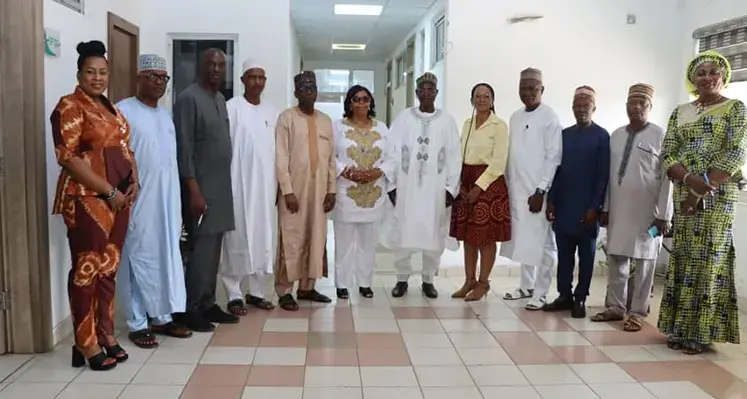
Nigeria and Botswana collaborates to modernise livestock sector. (Image credit: Federal Ministry of Livestock Development)
The Federal Government of Nigeria has reaffirmed its commitment to implementing evidence-based policies aimed at modernising the country’s livestock sector, positioning it as a major driver of economic growth.
This was emphasised by the Honourable Minister of Livestock Development, Idi Mukhtar Maiha, during a courtesy visit from Her Excellency Philda Nani Kereng, High Commissioner of the Republic of Botswana to Nigeria, on Friday, 12th December 2025, at the Ministry in Abuja.
Minister Maiha highlighted the need for Nigeria to move beyond outdated livestock systems and adopt structured reforms that boost productivity, encourage value addition, and ensure sustainable livelihoods for farmers and other stakeholders along the livestock value chain.
“The Botswana experience is a major inspiration. Your nation has achieved in 50 years what the world continues to study, and we are interested in domesticating many of those lessons,” he said.
He added, “Nigeria, as the largest market in Africa, is ready to expand its livestock sector to compete globally, while also partnering with Botswana to accelerate the journey,” noting Botswana’s notable achievements in beef exports to Europe, transboundary disease management, and the integration of technology in livestock traceability.
Minister Maiha also stressed Nigeria’s readiness to learn from Botswana’s model as the Ministry embarks on a plan to rehabilitate and modernise 417 grazing reserves across the country into structured ranching ecosystems.
In response, High Commissioner Kereng highlighted Botswana’s five-decade success in beef production and export to Europe, attributing it to deliberate policies, strong governance, and extensive support systems for farmers. She explained that Botswana’s livestock sector evolved from a rural development model focused on agriculture, supported by legislation and policies enabling farmers to produce high-quality cattle for both livelihood improvement and national economic growth.
Her Excellency further noted that Botswana’s beef sector, second only to diamonds in national revenue, thrives on strict disease-control measures, communal land management, targeted veterinary interventions, and highly subsidised farmer support programmes.
She outlined areas for potential collaboration with Nigeria, including beef quality improvement through enhanced genetics, modern abattoir practices, disease management, veterinary protocols, vaccine production, livestock traceability, and grazing management, reinforcing a shared commitment to advancing sustainable and competitive livestock development.

The reforms aim to eliminate duplication, simplify compliance and improve efficiency and competitiveness across the agricultural value chain.
Zimbabwe’s agricultural sector is poised for renewed growth following sweeping regulatory reforms that will see several statutory fees scrapped or significantly reduced from the coming year.
The government-led initiative is expected to ease the cost of doing business for farmers, boost productivity and strengthen the country’s food security and export potential.
The reform programme, coordinated by the Office of the President and Cabinet with support from the Treasury and technical assistance from the World Bank, targets more than 20 permits and levies across the livestock, dairy and stockfeed industries. Treasury officials confirmed that once the measures are gazetted, agriculture will be the first sector to benefit before similar reforms are extended to other areas of the economy.
Deputy Minister of Lands, Agriculture, Fisheries, Water and Rural Development Davis Marapira said the new adjustments would begin to take effect with the implementation of the national budget, typically in January.
“The fee adjustment policy takes effect when the budget is implemented, which is usually in January. The impact of that policy must be felt through lower prices for customers,” he said.
According to a Treasury press statement, Zimbabwe’s agriculture sector has long been burdened by excessive regulations, high compliance costs and overlapping institutional mandates. Dairy farmers, for instance, previously required up to 25 permits from 12 agencies, while feed manufacturers needed 23 permits from 10 departments. Beef cattle farmers faced 18 requirements, abattoirs 20, dairy processors 21 and feed processors 23.
The reforms aim to eliminate duplication, simplify compliance and improve efficiency and competitiveness across the agricultural value chain. Among the key changes is the removal of the Agricultural Marketing Authority livestock and cattle levy, the biosafety permit, as well as borehole water abstraction charges and user fees.
Additional reforms include the abolition of farm registration certificates for small and medium-scale farmers, a sharp reduction in dairy processor registration fees from an annual US$350 to a once-off US$50, and a cut in feed manufacturing registration fees to a flat US$20. Livestock movement clearance fees have been halved, while import permits for livestock genetics such as heifers and bulls have dropped from US$100 to US$20.
Export-related costs have also been reduced, with dairy export permits falling from US$900 to US$10, and meat export permit fees lowered to US$100 annually. Environmental impact assessment licence fees have been slashed from 1,5% to 0,05% of project value, capped at US$100 000, and are now payable during operations rather than upfront.
“The government is elevating efforts to retain agriculture as the mainstay and engine of the economy, [and is] cognisant of its crucial role in job creation, particularly for the rural population, supporting 65% of livelihoods and the bulk of the country’s exports,” the Treasury said.
Meanwhile, Marapira cautioned that fee reductions alone would not automatically translate into lower consumer prices.
“The question is whether we have discipline at every level – from the farmer to the middlemen, abattoir, processor, and butcher. Otherwise, someone will take advantage of the government’s fee reductions to make bigger profits. It needs a holistic approach from all of us.
“Some want profit margins of as much as 200%, [or even] 50% in a US dollar environment where the currency is stable. But the government will have heard your concerns as farmers, as retailers,” he added.
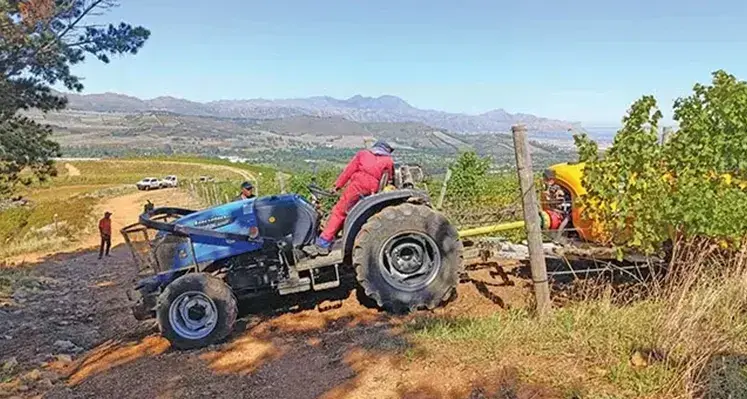
Vicar sprayers are proving to be a formidable investment for South African farmers striving for smarter. (Image credit: Vicar)
European spraying innovation has taken a bold leap into the South African agriculture sector with the arrival of Vicar mist blower sprayers, a technology reshaping the way growers manage crop protection.
Developed over 40 years ago by Italian engineer Vincenzo Caroli in collaboration with LTS in Germany, this advanced sprayer design has become synonymous with intelligent airflow, high efficiency, and exceptional coverage. Now imported by Ikapa Trading in Grabouw, Vicar sprayers are fast becoming a favourite among farmers seeking smarter, faster, and more precise spraying solutions.
What sets the Vicar system apart is its pioneering radial turbine technology, which independent consultant Mike Heath who has witnessed decades of machinery evolution believes to be a game-changer. Unlike conventional axial flow sprayers that rely on propeller blades and lose speed as air moves through housings and deflectors, Vicar sprayers use a single turbine resembling a water wheel. This turbine sucks air in from both sides and moves it radially at a 90° angle, producing a consistent, high-velocity air stream.
The uniquely designed cast aluminium housing forces air through calibrated outlets only, resulting in a uniform exit speed of 250km/h to 280km/h at 540 PTO. Crucially, this system achieves optimal spray delivery while requiring up to two to three times less air volume than axial flow designs dramatically improving efficiency.
Vicar sprayers are also fitted with 360° rotating spray heads, each equipped with up to eight nozzles that move with the airflow for precise application. Heath explains that this makes every model adaptable: vineyards, orchards, tree crops, flowers, vegetables and dense plantations can all be targeted with outstanding coverage. The Vicar 540 reaches 12m per side and 25m in height, while the Vicar 450 covers 4m per side and up to 15m high ideal for vineyards and orchards. The 456 model enhances multirow spraying for modern high-density crops.
Vicar’s airflow control technology also allows operators to manipulate spray direction and prevent turbulence. Upper outlets can create an “air ceiling” to keep spray low for young crops, while lower outlets deliver targeted protection. With reduced drift up to 90% less environmental pollution, as tested by the Julius Kühn-Institut—Vicar ranks among the few sprayers meeting Germany’s strict regulations.
Heath adds that the sprayers’ ability to work faster at high air speeds means farmers can double their operational pace compared with axial fan sprayers. “Being able to work faster and spray multiple rows is allowing Vicar clients to substitute at least two conventional sprayers with one Vicar sprayer,” he notes.
Built for stability, especially on hilly terrain, Vicar’s trailed models feature double-axle frames, three-point linkage attachment, adjustable wheels and a short-turn system that improves manoeuvrability. Tanks include clean-water reservoirs for easy flushing, reducing contamination risks and enhancing longevity.
Despite being pricier than traditional sprayers, co-owner Neels Thiart says the machines pay for themselves quickly thanks to superior performance and durability. In Europe, their second-hand value remains exceptionally high: “In Europe you are able to sell one of these sprayers second-hand for almost the same price as you bought it,” he says.
With unmatched penetration, reduced drift, precision airflow and long-term value, Vicar sprayers are proving to be a formidable investment for South African farmers striving for smarter, more sustainable crop protection.







